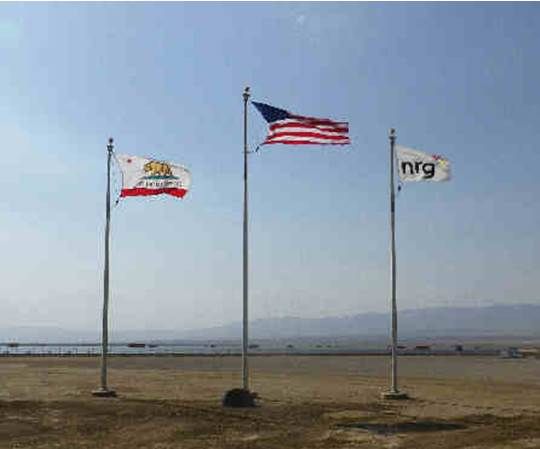At the ribbon-cutting for NRG Solar’s 66-megawatt Alpine Solar Generating Facility, completed by world-leading solar-power-plant builder First Solar, NRG Solar Senior VP Randy Hickok talked with GTM about the solar business.
NRG Energy (NYSE:NRG) is the biggest unregulated U.S. producer of electricity. Its 1,200-megawatt operational solar capacity and 1,000-megawatt solar pipeline makes the solar subsidiary the country’s biggest solar developer-operator, Hickok said.
NRG is also building new, highly flexible natural gas plants because, Hickok explained, increased grid penetration of variable renewables necessitates rapid dispatch units to keep the grid stable. After Fukushima, he added, NRG set nuclear development aside.
Hickok said Alpine’s 66-megawatt size is big by current standards because solar industry economics are turning developers away from projects like the nearby 230-megawatt Exelon-First Solar project and the 579-megawatt MidAmerican-SunPower (SPWR) project.
Here's what Hickok had to say about PV plant size:
I think the future of solar is bright. We would like to do more large facilities. We still have one or two in advanced stages of development. But it is far more likely that we will do a lot of 20-megawatt projects. That seems to be what people are getting into.
On the NRG investment in BrightSource Energy’s Ivanpah solar power tower projects:
We want to see how Ivanpah performs. All indications are positive. But the landscape has changed. The price of photovoltaic panels has dropped 80 percent over the last five years.
There is a project in Nevada [the 110-megawatt SolarReserve Crescent Dunes solar tower] nearing completion that has molten salt storage. That can be exciting. Being able to store has a lot of value to our customers, and salt storage so far seems to be the most practical way to do that. We will keep an eye on that technology.
On PV technologies:
First Solar’s cadmium telluride thin film is competitive with polycrystalline panels but, so far, there is not a clear winner. We’re finding that each has merits.
The First Solar panel is less expensive, but it’s a little less efficient than polycrystalline. For projects where we have limited land, we may be more likely to use polycrystalline. But where land is available, we go for thin film due to its price advantage. But they’re not night-and-day different; they’re competitive.
On more solar development:
We have a great appetite for additional solar. As long as the projects are available, we intend to keep investing. There is no specific dollar limit on our budget. If they are good projects, we’re going to do them.
We are increasingly active in smaller commercial and industrial scale projects like school district or municipal government buildings. As utility-scale projects get less frequent, we’re seeing the commercial-industrial space pick up the slack. We are pursuing that aggressively.
On opening up new territories:
We are expanding to other states. [...] We are looking at expanding into foreign markets. We have no geographic limits. The whole world is on our list. The questions are: Can you find a good project? Does it get the right return?
On using a hedge contract instead of a power purchase agreement:
We would consider it. It’s a function of who wears the price risk, of counterparties, of who is willing to provide the financial hedge. That could be traditional banks, other large energy companies, or anybody that has an appetite for commodity price risk.
On policy:
A price on carbon would be a good idea and a boon to renewable energy, but we don’t think anything like that is on the radar.
We’re anticipating diminishing subsidies and tax treatment for renewable projects. We have always believed that would come, and it now appears nearer. But we are ready. With the dramatic price drop of PV panels and the technology, we are getting very close to the point where you don’t need subsidies for solar to be competitive. Give us a couple of years, and even without subsidies, solar will make sense.

On settling with the Alpine facility’s neighboring communities:
The check is absolutely in the mail. They will probably have it next week. Every community is a little different. Here it was a check. In others, it might be a donation to a local school or paving a road. You have to be a good corporate citizen and make the community happy, but just writing a check is not my favorite way to do it. I would rather get closer to the community and find out what their priorities are and find ways to further their goals.
The deal, which GTM reported on last year, provides $300,000 in payments over twenty years and a ten-acre plot of Antelope Valley land to 501(c)(3) conservancies set up by both the Fairmont Town Council and the Oso Town Council to represent their communities.
A payment of $25,000 to each was due on commencement of construction. For the first five years, on the construction commencement anniversary, the payment is $20,000. In years six through ten, the payment will be $15,000. In years eleven through twenty, it will be $10,000.



